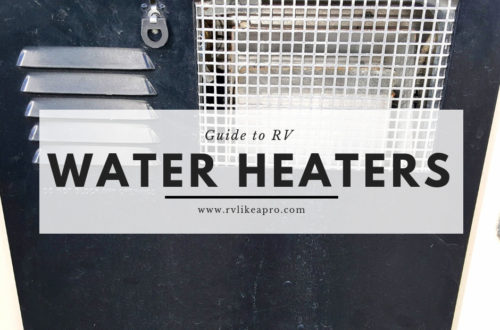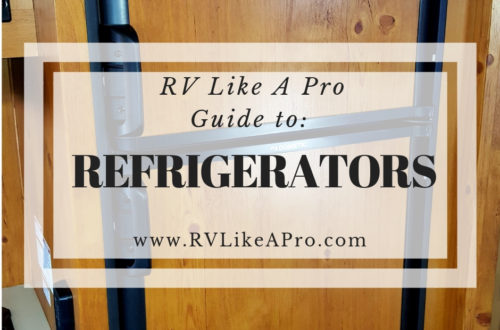
Determining the Trade in Value for an RV
When preparing to buy a new camper, the questions of: “How much is my camper is worth?” can be really important. This article is about how the dealer determines an RV’s trade in value. I wanted to make this article because I see customers often irritated by what they are offered for their trade in when buying a new camper.
An easily avoidable misunderstanding is to know what you owe on your camper. Unfortunately, a lot of people find themselves owing more on their camper than what that camper is worth. This happens frequently when people are wanting to trade in their second camper for their third camper. One reason they may owe more money than the RV is worth is because when they traded in their first camper to buy the second they still owed money on the first one. The dealer then rolled the pay off for the first RV into the loan for the second camper. Thus the second camper is carrying that extra debt. Understanding what you owe will save you a lot of headache and heartache at the dealership.
NADA
The NADA (National Automobile Dealers Association) is likely the first place the dealer will look to find your RV’s value. Most dealers are going to look your camper up on the Dealer NADA RV price book. This is similar to the Kelley Blue Book for autos. The dealer will type in a year, make, and model in the Dealer NADA. NADA will give them a trade in value and a retail value. This information is going to give the dealer an idea where to start their price evaluation.
Average Depreciation Rates
Depreciation rates an important factor in trading in an RV. If you buy a new camper, on average, the depreciation the first year is about 20%. The second year the depreciation goes in half to about 10%. Every year after that the RV loses about 10% of its value. This holds true until about 6 years of age. The Dealer NADA book on campers goes back about 10 years. After 10 years your camper will be worth whatever somebody might be willing to pay for it. Often people will look online and see what people are asking for that make and model of camper. Keep in mind: sellers often ask for more than they expect to get. Simply seeing an ad for an RV priced at a certain point does not mean that is what the RV will be sold for.
Other things the dealer must take into account
Is this RV popular?
The RV dealer will decide if the RV a popular model that will sell quickly or if the dealer will be holding onto it for a long period of time before it sells.
Sometimes it’s as simple as a camper that was once a very popular model or floor plan is not popular anymore. In addition, some campers are more popular in certain parts of the country. For instance, a bunk model might be very popular out east and not so popular in Southern Florida or Arizona.
Is this RV known to have problems?
The sales manager will have the experience to know whether that particular make or model has been known to have issues that the customer may not be aware of. Some examples are: a known building issue such as widely spaced floor trusses making the floor feel soft, a weak frame, a builder who’s campers commonly delaminate, have water leak issues, etc.
Does this particular RV have any problems?
There is usually something wrong with every camper traded in, weather the customer trading it in knows it or not. Fortunately, most people that camp are pretty good people and will disclose known problems with their trade. The sales manager must be educated enough to find the big problems. Sometimes hidden, unknown or not mentioned at time of trade in.
Overhead costs
If a dealer buys your camper it will need to be inspected, repaired and cleaned for the next buyer. The next customer will expect everything to be working for the most part and clean.
Once your trade-in is received a service technician will have to go through it, inspect it and test everything in the camper. Even if there is nothing wrong with the RV, and it is in perfect shape, the dealer still has to pay a service technician four hours labor to go through your trade. If that technician finds any problems, the dealer has to pay the cost of the damaged parts and the time to repair it. Next the camper will have to be cleaned, vacuumed, the carpet shampooed and the exterior washed. The above is direct labor not including indirect labor such as salesmen, office staff, and other overhead.
What you can do
Maintenance is key. A well kept camper will be obvious to the dealer. Take care of your camper, and any water issues. This will causes your trade in value to go up exponentially. You can expect your campers value to plummet if you have: water leaks, exterior damage, not done exterior maintenance, interior damage, missing cabinetry, do-it-yourself repairs, strong odors from pets, smoking, and cooking
These are the main things that determine your RV’s trade in value. If you enjoyed this article please share it on social media!
Happy Camping!





34 Comments
jen
I am learning so much from your blog about a world that has always seemed out of reach to me.
Narcissis
Very informative. Thanks for sharing.
Tricia Snow
I had a horse trailer that was a living quarters. I maintained that thing better than my home! Until a detailer, I hired at a horse show acid washed the outside. The paint was never the same. It hurt me on trade in and was so difficult to clean after that.
Nicki
Ugh. That is awful!
Karie
I learn so much from these posts. I can’t wait to get our own.
Brittany
Great article – I didn’t know everything that really went into a trade/sell!
meagan
I never THOUGHT I wanted to do the whole RV thing, but when I read your posts, I think, “hmmmmm….”
Nicki
LOL. It is addictive. Great for road trips with kids too!
Junell DuBois
I never knew so much went into RV life until I came across your blog. Such a great resource for someone looking to invest in one.
Janice
Very in information. You put a lot of work into your post
katie
This is all great to know before purchasing an RV too! Now I can think like a dealer and know what to look at to decide if I’m paying too much!
Lauri
Great info and well written. I did not know about the depreciation, which is funny, because years ago we sold ours and actually made a small profit. We could not believe it! Thanks again for a great write.
Nicki
That’s awesome!
Amber Dunn
Such important information for anyone with an RV.
Stacey
Good info! We bought a used pop-up camper once, and we were happy to get a pretty great deal. We likely would have traded for a solid wall camper if a tree hadn’t fallen on it during a storm. We weren’t in it when it happened, thankfully. We haven’t replaced it, but we do look at RVs occasionally. We’re still thinking we will buy one someday.
Rachel Newlon
Thank you for this!!! My childhood friend sells RV’s and I’ve learned a little bit from him in regards to maintenance. You have LOTS of good advice!
Pauline
I love your tips!!!! I have learned so much. This was another good one.
Janine
Such a great practical guide for people who are ready to trade in their RVs. Nice work!
Jelane
Great information not only for RV owners but those looking to buy. Still dreaming of one day hitting the road in an RV. Thanks for the info.
cara
Great info! I’d love to get an RV in my future!
Laura
Wow! Lots of things to think about! Great tips! Thanks for a super post!
Jelane
Valuable information for those who already have RVs and those of us who are considering getting an RV.
Mary
Thanks for this info. You’re so knowledgeable and you always make me want to get an RV every time I read your posts!
Georgette
Nice to know. I’m reading your post and my husband is watching YouTube building RVs 😏 I always share your posts with him. Thanks for the info.
Susan Franklin
We don’t know anything about the RV life – you keep us so well informed. I’m not sure if we’ll ever buy one, but we definitely want to try a road trip in one to check it out. I’m glad we have your site to keep us in the know! Great information.
Monica
I would love to get an rv before we retire man many years from now. I know you can get them cheap depending on age and condition. Would like to fix one up.
Dennis
This information is so valuable! You bring up so many great considerations
Dana
All great information for RV owners! My parents used to own one. I know several friends who do now!
Dominique
Very informative. My family had a large RV a few years back and it took about 6 months to find a buyer, partly due to depreciation.
Ruth Iaela-Pukahi
I’m so curious about life in an RV…can I fit a family of 10 in a camper? I then would have to try convince my teenagers to leave high school for a bit. 🙂 It sounds so exciting! 🙂
Nicki
I’m sure you could. It would be very cozy though. 🙂
Kathy Phillips
One day I will get a camper and I will need all this information. Thank you for sharing this will be so helpful.
T.M. Brown
I love that I know to whom I can send my friends who love to RV their way around the country! You are a wealth of information and such a great resource for this topic!
Shanna
I want an RV so bad! This is on my bucket list! Then I can worry about trade in value. Haha